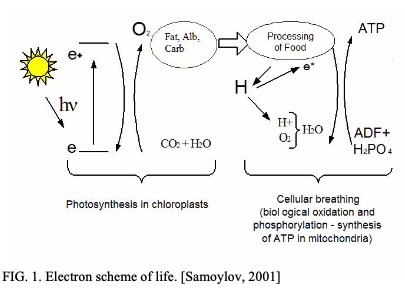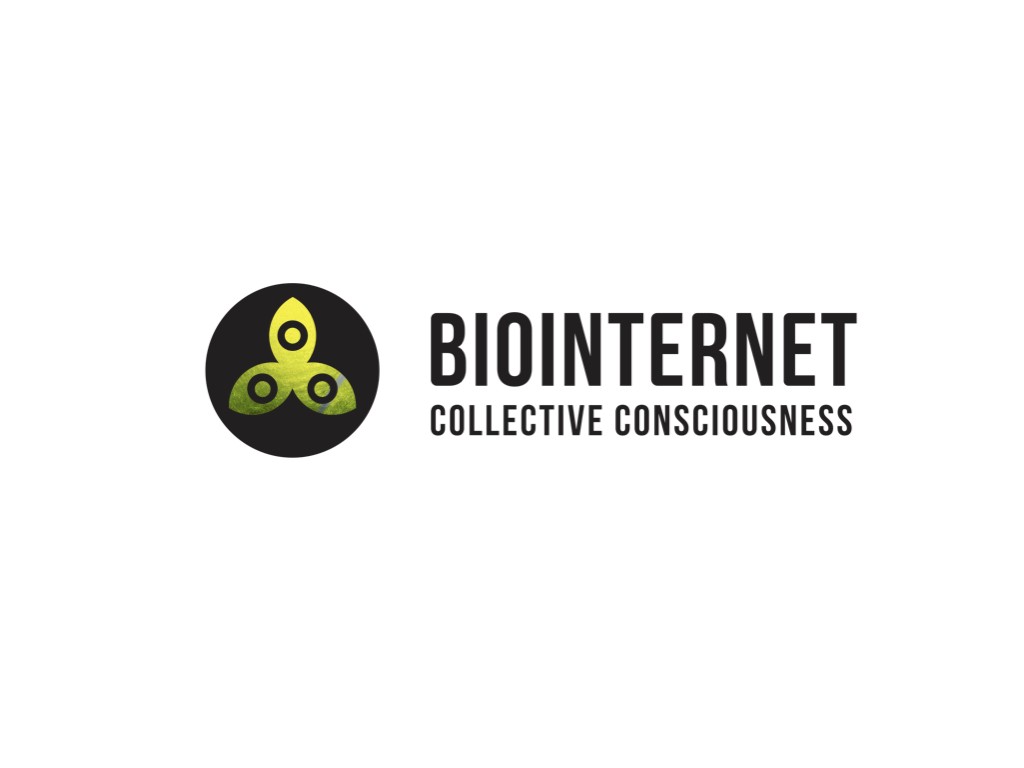Biophysical Energy Transfer Mechanisms in Living Systems:
The Basis of Life Processes.
KONSTANTIN KOROTKOV, Ph.D. 1, BERNEY WILLIAMS, Ph.D. 2,and LEONARD A. WISNESKI, M.D., F.A.C.P. 3
1 – St. Petersburg Technical University ITMO, Russia; 2 – Holos University Graduate Seminary, Fairview, Missouri; 3-George Washington University Medical Center.
Abstract
The main reservoir of free energy in biological processes is electron-excited states of complex molecular systems. Communities of delocalized excited π-electrons in protein macromolecules are the basis of this energy reservoir. Specific structural-protein complexes within the mass of the skin provide
channels of heightened electron conductivity, measured at acupuncture points on the surface.
Stimulated impulse emissions from the skin are also developed mainly by transport of delocalized π-electrons. Stimulated by high voltage impulses, optical emissions, with amplification in gaseous discharge, are registered by optical sensors (Gas Discharge Visualization – GDV). This quantum model supports an argument that GDV techniques provide indirect judgment about the level of energy resources at the molecular level of functioning in structural-protein complexes. Several years of GDV research have provided clinical correlations with well-accepted physiological parameters.
Gas Discharge Visualization methods for investigating human functional states, by assessing electro-optical parameters of the skin, are based on the registration of physical processes emerging from electron components of tissue conductivity.
Introduction
A precise definition of what we understand as “Energy” in relation to biological systems is a critical requirement, if we are to successfully incorporate into a Western scientific paradigm those complementary medicine approaches that are based on the Oriental notion of “energy transfer.”
Misuse of the term “energy” leads to misunderstanding and subconscious rejection of useful, practical applications. The latest biophysical quantum concepts can, however, provide a conceptual understanding of the “energy transfer” mechanisms in biological systems at the organism level. These
concepts create a basis for the biophysical explanation of Oriental notions of energy meridians, channels and acupuncture points.
The methods for investigating human functional states by assessing electro-optical parameters of the skin can be divided into two conditional groups, according to the character of biophysical processes involved. “Slow” methods, with measurement times of more than 1 second, make up the
first group. Under the influence of applied potentials, ion-depolarized currents are stimulated in the tissues and the ion component mainly contributes to the measured signal [Tiller, 1988]. The second group of “quick” methods, measurement times of less than 100 msec, are based on the registration of physical processes, emerging from the electron components of tissue conductivity. These processes are described mainly by quantum-mechanical models. They might therefore be denoted as methods of quantum biophysics. Such methods include techniques for registration of stimulated and self-luminescence, as well as the method of stimulated electron emission with amplification in gaseous discharge (Gas Discharge Visualization). Before discussing the assessment processes, let us first explore the electron mechanisms in biophysical processes in some detail.
Electron scheme of life

“I’m deeply sure that we will never be able to understand the essence of life, if we restrict ourselves to the molecular level… A surprising subtlety of biological reactions is stipulated by the mobility of electrons and can be explained only from the position of quantum mechanics.”
А. Szent-Györgyi, 1968
The main reservoir of free energy in biological processes is electron-excited states of complex molecular systems. When physical or mental work is done, electrons distributed in protein structures are transported within their given place and provide the process of oxidative phosphorylation, i.e. the energy supply for local system functioning. A part of these electron excited states is expended for the support of current energy resources in the organism. A part can also be reserved for the future, as in lasers after absorption of a pump pulse. Communities of delocalized excited π-electrons within protein macromolecules are the basis of this energy reservoir. The organism forms an electron “energy depot,” at some moments requiring great resources or rapid flowing under conditions of extra-high loads — typical, for example, of professional sport.
It can be argued that the formation of specific structural-protein complexes within the mass of epidermis and dermis of the skin provides channels of heightened electron conductivity, which are experimentally measured as electrical conductance at acupuncture points on the surface. Stimulated
impulse emission from the skin is also developed mainly by transport of delocalized π-electrons, realized in electrically non-conducting tissue by quantum electron tunnel mechanisms. This proposition allows an assumption that the GDV technique provides indirect judgment about the level of energy resources at the molecular level of functioning in structural-protein complexes.

